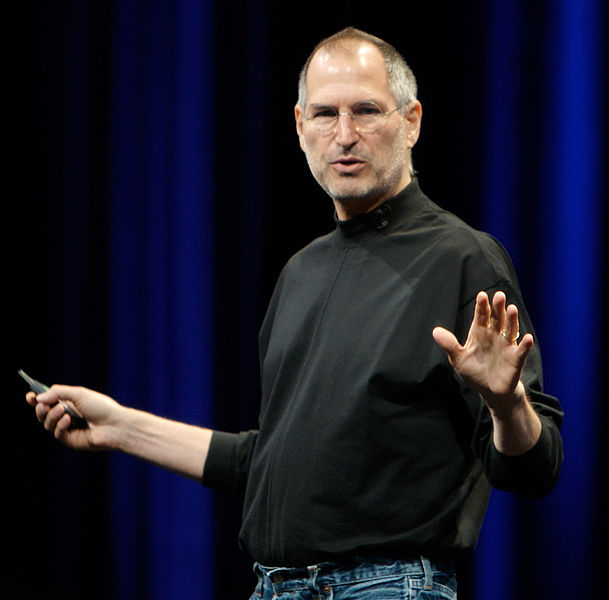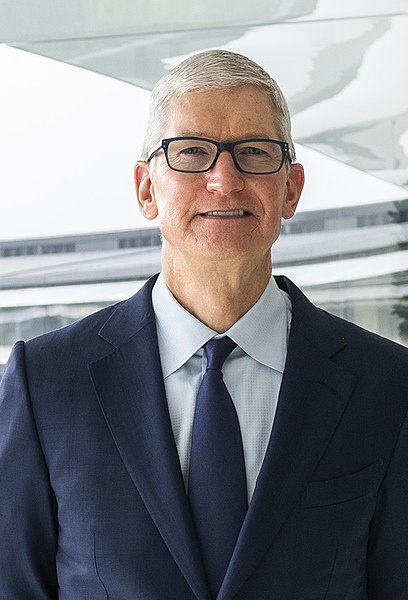The Jobs Formula: Unlocking the Secrets of Visionary Leadership

Embarking on the Steve Jobs Leadership Odyssey
In today’s hyper-competitive and rapidly evolving world, it is essential for leaders to be visionary, innovative, and adaptable. One individual who exemplified these qualities and forever transformed the technology landscape is none other than Steve Jobs. His impact on the world has been profound, with Apple becoming one of the most valuable companies globally and the products he helped create shaping the way we live, work, and communicate.
Steve Jobs was an enigmatic figure, often described as both a genius and a demanding leader. His unique approach to leadership enabled him to foster a culture of innovation, push boundaries, and create groundbreaking products that have left an indelible mark on our lives. Jobs’ commitment to design excellence, focus on user experience, and ability to envision the future have made him a symbol of what it means to be a transformative leader.
The purpose of this article is to delve deep into the leadership lessons and stories of Steve Jobs. By examining his life, the challenges he faced, and the choices he made, we can uncover the principles that guided his decision-making and leadership style. These insights will not only provide a clearer understanding of the man behind the myth but will also offer valuable guidance to aspiring leaders in any field or industry.
This comprehensive analysis will take us on a journey through the different stages of Jobs’ life and career, from his early beginnings as a tech enthusiast to his time away from Apple and his triumphant return to the company he co-founded. Along the way, we will explore the qualities that set Jobs apart as a leader, the challenges he faced, and the enduring legacy he has left behind.
In this article, we aim to inspire and inform readers about the incredible life and leadership lessons of Steve Jobs. Through a deep exploration of his experiences and stories, we hope to empower the next generation of leaders with the wisdom and insights gleaned from one of the most influential figures in the history of technology.
Early Life and Formative Experiences
Childhood and upbringing
Steven Paul Jobs was born on February 24, 1955, in San Francisco, California, and was later adopted by Paul and Clara Jobs. His adoptive parents were nurturing and supportive, instilling in him a strong sense of curiosity and self-confidence. Jobs was raised in Mountain View, California, the heart of what would later become known as Silicon Valley. Growing up in an environment surrounded by engineers and innovators, Jobs was exposed to the world of technology from an early age.
From a young age, Jobs displayed an innate ability to think differently and challenge the status quo. He was intensely curious about the world around him, often tinkering with electronics and devouring books on various subjects. His early years were marked by a strong desire to learn and explore, traits that would later become hallmarks of his leadership style.
Meeting Steve Wozniak and forming Apple
During his high school years, Jobs met Steve Wozniak, a fellow electronics enthusiast who would later become his co-founder at Apple. The two quickly became friends, bonding over their shared passion for technology and innovation. Their partnership would prove to be the catalyst for the creation of one of the most iconic companies in the world.
In 1976, Jobs and Wozniak founded Apple Computer Inc. in the Jobs family garage. The duo’s complementary skills and shared vision laid the foundation for a strong partnership. Wozniak’s technical brilliance and Jobs’ keen understanding of consumer needs and market trends helped Apple create products that not only met but exceeded customer expectations.
Early challenges and setbacks
The road to success was not without its obstacles for the young company. Apple faced multiple challenges in its early years, ranging from funding constraints to technological hurdles. Jobs’ leadership was tested as he grappled with the realities of running a rapidly growing business. His determination, resilience, and ability to learn from setbacks would shape his approach to leadership and contribute to his future success.
One of the most significant early challenges Jobs faced was his ouster from Apple in 1985, following a power struggle with then-CEO John Sculley. The experience was a crushing blow to Jobs, but it would also serve as a catalyst for personal and professional growth. As he later said in a commencement speech at Stanford University, “I didn’t see it then, but it turned out that getting fired from Apple was the best thing that could have ever happened to me. The heaviness of being successful was replaced by the lightness of being a beginner again, less sure about everything. It freed me to enter one of the most creative periods of my life.”
The early years of Steve Jobs’ life and career were marked by a potent combination of curiosity, innovation, and resilience. These formative experiences helped shape the leader he would become, laying the groundwork for a storied career that would change the course of technology and human history.
The Distinctive Qualities of Steve Jobs’ Leadership Style
Focus on simplicity and minimalism
One of the defining characteristics of Jobs’ leadership style was his relentless pursuit of simplicity and minimalism. He believed that the best products were those that were not only aesthetically pleasing but also easy to use and understand. Jobs was known for his obsession with making complex technology accessible to the average user, which required a deep understanding of the user’s needs and desires.
This focus on simplicity extended to every aspect of Apple’s operations, from product design and development to marketing and customer service. Jobs’ ability to distill complex ideas into their most essential elements allowed Apple to create products that resonated with consumers on a deeper level. His commitment to minimalism and user-centric design became a guiding principle for the company and set it apart from its competitors.
Demand for perfection and attention to detail
Another key aspect of Jobs’ leadership style was his unwavering demand for perfection and attention to detail. He was known for his meticulous approach to product development, often pushing his team to the brink to achieve the highest possible standards. Jobs’ insistence on excellence could sometimes be seen as uncompromising, but it also fueled Apple’s ability to create groundbreaking products that captured the public’s imagination.
Jobs’ focus on perfection extended beyond product design to encompass every aspect of the company’s operations. He was deeply involved in all aspects of Apple’s business, from supply chain management to retail store design. This commitment to excellence in every area of the company’s operations helped create a culture of high performance and continuous improvement at Apple.
Charismatic and persuasive communication
Steve Jobs was an incredibly gifted communicator, able to inspire and motivate his team with his charismatic and persuasive speaking style. He had a unique ability to present complex ideas in a simple and engaging manner, often using storytelling techniques to convey his message. Jobs’ communication skills were instrumental in rallying his team around a common vision and in selling that vision to customers, investors, and the media.
Jobs’ renowned presentations, known as “Stevenotes,” became highly anticipated events in the technology world. His ability to captivate audiences with his storytelling and product demonstrations played a critical role in Apple’s success. Jobs’ communication style not only built excitement around new products but also helped create a powerful brand identity that resonated with consumers.
Ability to envision and articulate the future
Perhaps the most remarkable aspect of Steve Jobs’ leadership style was his ability to envision the future and articulate a clear path to achieving it. Jobs had an uncanny knack for anticipating market trends and consumer preferences, often years before they materialized. His visionary thinking allowed Apple to disrupt multiple industries and create entirely new product categories.
Jobs’ foresight and ability to think differently enabled him to guide Apple through numerous technological revolutions, from personal computing to smartphones and beyond. His ability to see the potential in emerging technologies and to integrate them into user-friendly products made Apple a trailblazer in the tech industry.
In summary, Steve Jobs’ leadership style was characterized by a relentless pursuit of simplicity and minimalism, an unwavering demand for perfection, a charismatic and persuasive communication style, and an extraordinary ability to envision and articulate the future. These distinctive qualities helped Jobs create a unique and enduring legacy as one of the most transformative leaders in history.
Lessons from the Apple II Era
Fostering a culture of innovation
The Apple II, launched in 1977, was the company’s first mass-market personal computer and a pivotal milestone in Apple’s history. This groundbreaking product showcased Jobs’ ability to foster a culture of innovation within the company. He created an environment where experimentation, creativity, and risk-taking were encouraged, allowing Apple to push the boundaries of technology and deliver products that would redefine the industry.
One of the key lessons from the Apple II era is the importance of cultivating a culture that embraces change and fosters continuous innovation. Jobs understood that in order to stay ahead in the rapidly evolving tech industry, Apple needed to be nimble and adaptive, constantly seeking out new ideas and opportunities. His leadership during this period laid the groundwork for the company’s ongoing commitment to innovation.
The importance of collaboration
The success of the Apple II was not solely due to Jobs’ efforts; it was also a testament to the power of collaboration. The fruitful partnership between Jobs and Wozniak, as well as the contributions of other early Apple employees, played a crucial role in the development of the groundbreaking personal computer. Jobs recognized the importance of assembling a diverse and talented team, valuing the unique perspectives and skills that each individual brought to the table.
The Apple II era highlights the significance of collaboration in driving innovation and achieving success. As a leader, Jobs understood that the best ideas often emerge from the intersection of different disciplines and perspectives. This recognition of the value of collaboration would become a defining characteristic of Apple’s approach to product development and problem-solving throughout its history.
The power of market positioning and branding
The Apple II’s success was not only due to its technical achievements but also to Jobs’ keen understanding of market positioning and branding. Jobs recognized the importance of creating an emotional connection with consumers and differentiating Apple’s products from those of its competitors. He sought to position Apple as a brand that represented innovation, quality, and a commitment to the user experience.
The launch of the Apple II demonstrated the power of effective branding and market positioning. Jobs’ ability to craft a compelling narrative around the product, highlighting its user-friendly design and innovative features, helped set Apple apart in a crowded market. This focus on branding and positioning would become a cornerstone of Apple’s strategy, contributing to the company’s enduring success in the years to come.
The Apple II era offers valuable leadership lessons in fostering a culture of innovation, embracing collaboration, and harnessing the power of market positioning and branding. These insights, which were instrumental in shaping Apple’s early success, continue to hold relevance for leaders across industries and serve as a blueprint for building transformative organizations.
The NeXT Chapter: Lessons from Jobs’ Time Away from Apple
Resilience and reinvention
In 1985, following his departure from Apple, Jobs embarked on a new venture by founding NeXT Inc., a computer and software company aimed at revolutionizing the higher education and business markets. While NeXT ultimately failed to achieve the level of success Jobs had envisioned, his time at the company offers valuable lessons in resilience and reinvention.
Despite the challenges he faced during this period, Jobs refused to give up on his vision for the future of computing. He continued to push the boundaries of technology, developing new products and software that would later serve as the foundation for several key Apple innovations. Jobs’ ability to bounce back from adversity and reinvent himself as a leader highlights the importance of resilience in the face of setbacks and failure.
Broadening his horizons: Pixar and the entertainment industry
In addition to his work at NeXT, Jobs also ventured into the world of entertainment by acquiring The Graphics Group (later renamed Pixar Animation Studios) from Lucasfilm in 1986. Under Jobs’ leadership, Pixar would go on to redefine the animation industry, producing a string of groundbreaking films such as Toy Story, Finding Nemo, and The Incredibles.
Jobs’ foray into the entertainment industry demonstrates the value of broadening one’s horizons and exploring new opportunities. His involvement with Pixar allowed him to expand his skillset, gain experience in a different sector, and further hone his leadership abilities. This diversification would prove invaluable upon his return to Apple, as Jobs was able to leverage his experience at Pixar to help shape the company’s strategy in the digital media space.
Learning from failure: The NeXT computer
The NeXT computer, released in 1988, was a commercial failure, plagued by high production costs, limited software availability, and a niche target market. However, the experience of developing and launching the NeXT computer provided Jobs with valuable insights and lessons that would inform his later success at Apple.
Jobs learned from the mistakes he made at NeXT, gaining a deeper understanding of the importance of controlling costs, fostering strategic partnerships, and building a scalable business model. Moreover, the technological innovations developed at NeXT, such as the advanced operating system and object-oriented programming, would later be incorporated into Apple’s products, contributing to the company’s resurgence in the late 1990s and beyond.
The NeXT chapter in Steve Jobs’ career offers essential leadership lessons in resilience, reinvention, and learning from failure. By embracing these challenges and drawing on the experiences gained during this period, Jobs was able to emerge as a stronger, more effective leader, setting the stage for his triumphant return to Apple and the company’s subsequent rise to global dominance.
The Triumphant Return to Apple: Reinventing the Company and Shaping the Future
Reviving Apple: The iMac and beyond
In 1997, Jobs returned to Apple as interim CEO following the company’s acquisition of NeXT. At the time, Apple was struggling with declining market share, a bloated product lineup, and dwindling financial reserves. Jobs’ return to the company he co-founded marked the beginning of a remarkable turnaround that would see Apple regain its status as an industry leader and innovator.
One of the first major product releases under Jobs’ leadership was the iMac, a sleek and colorful all-in-one computer that represented a bold departure from the beige boxes that dominated the market. The iMac was a testament to Jobs’ ability to identify market trends and create products that resonated with consumers. Its success helped reestablish Apple’s reputation for design excellence and innovation, laying the foundation for a series of groundbreaking products that would follow.
Fostering innovation: The iPod, iPhone, and iPad
The years following Jobs’ return to Apple saw the company release a string of innovative products that would redefine entire industries and change the way we live, work, and communicate. The iPod, iPhone, and iPad showcased Jobs’ ability to envision the future and bring it to life through the development of user-friendly, cutting-edge technology.
These products not only transformed Apple into one of the world’s most valuable companies but also revolutionized the music, telecommunications, and computing industries. Jobs’ leadership during this period underscored the importance of fostering a culture of innovation, embracing risk, and relentlessly pursuing excellence in every aspect of the business.
Building a lasting legacy
In addition to his impact on the technology landscape, Jobs’ return to Apple was marked by a renewed focus on building a lasting legacy for the company. He was instrumental in the development of Apple’s distinctive retail stores, which have become a cornerstone of the company’s brand and customer experience.
Jobs also placed a strong emphasis on developing the next generation of leaders, ensuring that Apple’s commitment to innovation and excellence would continue well beyond his tenure. His ability to instill his values and vision into the fabric of the company has helped secure Apple’s ongoing success and cemented its position as a global technology powerhouse.
The triumphant return of Steve Jobs to Apple offers invaluable leadership lessons in reinventing a company, fostering innovation, and building a lasting legacy. By applying these insights, leaders across industries can inspire and empower their teams to create transformative products, drive organizational change, and shape the future.
Unveiling the iPhone: A Game-Changing Innovation
The vision behind the iPhone
In January 2007, Steve Jobs took the stage at the Macworld Conference & Expo to unveil the iPhone, a revolutionary device that would forever change the way we communicate, consume media, and interact with technology. Jobs’ vision for the iPhone was to create a single device that combined a mobile phone, an iPod, and an Internet communication device, seamlessly integrating these functions into an intuitive, user-friendly interface.
Jobs recognized that existing smartphones were cumbersome and difficult to use, with poor software integration and unintuitive interfaces. He sought to disrupt the market by developing a product that would not only meet the needs of consumers but also delight and inspire them. The iPhone was the culmination of years of research, development, and collaboration, representing the culmination of Jobs’ vision for the future of mobile technology.
Overcoming engineering and design challenges
The development of the iPhone was fraught with engineering and design challenges, as Jobs and his team sought to create a device that was both technologically advanced and incredibly easy to use. Some of the most significant challenges included developing a multi-touch screen that could detect and interpret various gestures, creating a software platform that could support a wide range of applications, and crafting a sleek and elegant design that would appeal to consumers.
Jobs’ relentless pursuit of perfection and his unwavering commitment to user-centric design pushed his team to overcome these obstacles and deliver a truly groundbreaking product. The iPhone’s success is a testament to Jobs’ ability to inspire and motivate his team, as well as his willingness to take risks and push the boundaries of what was thought to be possible.
The impact of the iPhone on the tech industry and society
The launch of the iPhone had a profound impact on the tech industry and society at large, setting new standards for mobile devices and transforming the way we live, work, and communicate. The iPhone’s seamless integration of phone, media, and Internet capabilities created an entirely new market for mobile applications and services, leading to the rise of the app economy and the birth of countless new businesses and industries.
Furthermore, the iPhone’s success ushered in a new era of mobile computing, which has had far-reaching implications for industries ranging from healthcare and education to finance and entertainment. The device’s influence on society can be seen in the way we consume information, interact with one another, and navigate the world around us.
The unveiling of the iPhone serves as a powerful example of the transformative power of innovation and the lasting impact that visionary leadership can have on the world. By embracing risk, challenging conventional wisdom, and relentlessly pursuing excellence, Steve Jobs was able to create a product that changed the course of history and left an indelible mark on the lives of millions of people around the globe.
Reflections on Jobs’ Approach to Leadership and Management
The “reality distortion field”
Steve Jobs was often described as having a “reality distortion field” (RDF), a term coined by Apple employee Bud Tribble to describe Jobs’ ability to convince himself and others to believe almost anything with a mix of charm, charisma, and sheer force of will. This RDF allowed Jobs to inspire his team to achieve seemingly impossible goals and push the boundaries of what was considered achievable.
While the RDF has been criticized as a manipulative tactic, it also demonstrates Jobs’ unwavering belief in his vision and his ability to rally his team around that vision. The RDF highlights the importance of confidence and conviction in a leader’s ability to persuade others, whether it’s employees, investors, or customers, to share in their vision and work towards common goals.
Driving innovation through “creative abrasion”
One of the hallmarks of Jobs’ leadership style was his embrace of “creative abrasion,” a process of fostering innovation through constructive conflict and debate. Jobs believed that the best ideas emerge when diverse perspectives are brought together and challenged, even if it resulted in heated arguments and passionate discussions.
By fostering an environment where ideas could be openly debated and challenged, Jobs was able to drive innovation and ensure that only the best ideas rose to the top. This approach to leadership underscores the importance of embracing differing opinions, fostering open communication, and creating a culture where constructive conflict is not only tolerated but actively encouraged.
The importance of trust in a leader’s vision
A key aspect of Jobs’ leadership style was his ability to inspire trust in his vision, even when the path forward was uncertain or fraught with obstacles. His unwavering commitment to excellence and his track record of success helped to instill confidence in his team and gave them the assurance they needed to follow his lead.
Jobs demonstrated the importance of building trust by consistently delivering on his promises and staying true to his vision, even in the face of adversity. By cultivating trust among his team, Jobs was able to inspire loyalty, foster a sense of shared purpose, and create a culture where employees were willing to go above and beyond to achieve their goals.
In reflecting on Steve Jobs’ approach to leadership and management, it becomes clear that his success was driven by a unique combination of factors, including his ability to create a reality distortion field, his commitment to fostering innovation through creative abrasion, and his talent for inspiring trust in his vision. These qualities, while sometimes controversial, were instrumental in shaping Apple into the global powerhouse it is today and offer valuable lessons for leaders across industries and disciplines.
The Lasting Legacy of Steve Jobs
Succession planning and the role of Tim Cook
One of the most significant aspects of Jobs’ leadership was his foresight in preparing for his own succession. He understood that for Apple to continue thriving in his absence, the company would need a strong leader who shared his vision, values, and commitment to excellence. Jobs personally selected Tim Cook, then Apple’s Chief Operating Officer, to succeed him as CEO when he stepped down in August 2011.
Cook’s steady leadership and operational expertise have been critical to Apple’s ongoing success, allowing the company to navigate the post-Jobs era with relative ease. Cook has continued to uphold Jobs’ vision for Apple, emphasizing the importance of innovation, design, and user experience. Under Cook’s leadership, Apple has maintained its position as a global technology leader, demonstrating the effectiveness of Jobs’ succession planning and his ability to identify and cultivate talent.
Apple’s ongoing innovations and commitment to excellence
Even in the years following Jobs’ death, Apple has continued to uphold his legacy of innovation and excellence. The company has released a series of groundbreaking products, including the Apple Watch, AirPods, and more recently, the iPhone 13 and M1 Macs, which have further solidified Apple’s reputation as an industry leader.
These ongoing innovations are a testament to the lasting impact of Jobs’ leadership and his ability to create a culture that fosters creativity, risk-taking, and a relentless pursuit of excellence. Apple’s continued success serves as a powerful reminder of the enduring influence of Jobs’ vision and values, which continue to shape the company’s strategy and product development to this day.
The influence of Jobs’ leadership on the broader tech industry
The legacy of Steve Jobs extends far beyond the walls of Apple, as his leadership has had a profound impact on the broader tech industry and the world at large. His relentless pursuit of innovation, focus on design and user experience, and willingness to challenge conventional wisdom have inspired countless entrepreneurs, executives, and innovators to think differently and push the boundaries of what is possible.
Jobs’ influence can be seen in the rise of numerous tech giants, including Google, Facebook, and Amazon, which have embraced many of the principles and philosophies that defined his leadership at Apple. His impact on the tech industry and the broader business world serves as a powerful reminder of the transformative potential of visionary leadership and the enduring importance of embracing innovation, risk, and change.
The lasting legacy of Steve Jobs is evident not only in Apple’s continued success but also in the broader influence his leadership has had on the tech industry and the world at large. Through his commitment to innovation, design, and excellence, Jobs has left an indelible mark on the way we live, work, and communicate, and his insights and leadership lessons continue to inspire and guide leaders across industries and disciplines.
Lessons from Steve Jobs’ Extraordinary Leadership Journey
Steve Jobs’ extraordinary journey as a visionary leader, entrepreneur, and innovator offers a wealth of insights and lessons for leaders across industries and disciplines. His unwavering commitment to excellence, his ability to inspire and motivate his team, and his relentless pursuit of innovation have left an indelible mark on the tech industry and the world at large. As we reflect on his storied career and leadership style, several key takeaways emerge.
First, the importance of resilience and adaptability in the face of adversity cannot be overstated. Jobs’ experiences at Apple, NeXT, and Pixar demonstrate the value of learning from failure and reinventing oneself as a leader. By embracing challenges and drawing on the lessons gained from setbacks, Jobs was able to emerge stronger and more effective, setting the stage for his triumphant return to Apple and the company’s subsequent rise to global dominance.
Second, fostering a culture of innovation and creative abrasion is crucial for driving growth and success. Jobs’ ability to envision the future and bring it to life through groundbreaking products like the Macintosh, iPod, iPhone, and iPad highlights the transformative power of innovation and the importance of challenging conventional wisdom. By cultivating an environment where diverse perspectives are encouraged and ideas can be openly debated, leaders can unlock the full potential of their teams and achieve extraordinary results.
Third, building trust and inspiring loyalty among employees is a key component of effective leadership. Jobs’ ability to instill confidence in his vision and motivate his team to achieve seemingly impossible goals underscores the importance of trust and loyalty in driving organizational success. By staying true to their values and consistently delivering on their promises, leaders can create a strong sense of shared purpose and ensure long-term success.
Finally, Jobs’ lasting legacy serves as a powerful reminder of the enduring impact that visionary leadership can have on the world. His influence on the tech industry, the rise of numerous tech giants, and the ongoing success of Apple demonstrate the transformative potential of innovative and forward-thinking leadership. By embracing the lessons and insights gleaned from Jobs’ extraordinary journey, leaders across industries can inspire and empower their teams to create transformative products, drive organizational change, and shape the future.
As we continue to navigate an increasingly complex and rapidly evolving world, the leadership lessons and stories of Steve Jobs offer valuable guidance and inspiration. By applying these insights, leaders can cultivate a culture of innovation, resilience, and excellence, and ultimately leave their own lasting mark on the world.





